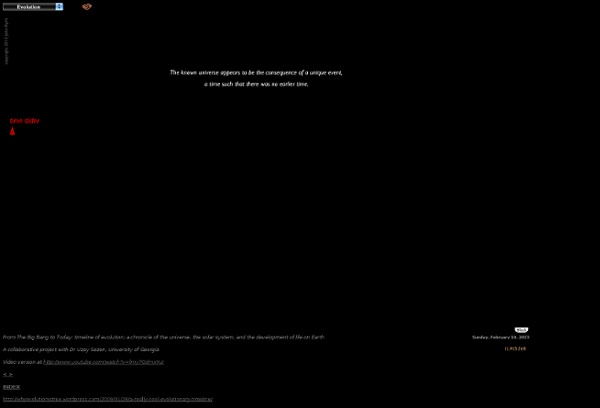



Cell Size and Scale Some cells are visible to the unaided eye The smallest objects that the unaided human eye can see are about 0.1 mm long. That means that under the right conditions, you might be able to see an ameoba proteus, a human egg, and a paramecium without using magnification. Smaller cells are easily visible under a light microscope. To see anything smaller than 500 nm, you will need an electron microscope. Adenine The label on the nucleotide is not quite accurate. How can an X chromosome be nearly as big as the head of the sperm cell? No, this isn't a mistake. The X chromosome is shown here in a condensed state, as it would appear in a cell that's going through mitosis. A chromosome is made up of genetic material (one long piece of DNA) wrapped around structural support proteins (histones). Carbon The size of the carbon atom is based on its van der Waals radius.
The History of Life on Earth by Robert Patierno on Prezi History of Life by Jesse Brunner on Prezi Genetics and the tree of life We traditionally think about the tree of life in terms of Kingdoms: plants, animals, fungi, bacteria, etc. Genetics has really revolutionized the way we think about the tree of life and, because our classifications should reflect ancestry (that is, who is more closely related to whom), it has actually called into question a lot of our traditional classifications. Most biologists split up life into three domains: Archaea, Bacteria, and Eucarya (the last of which includes animals, plants, fungi, etc.). The three domains of life. From Carl Zimmer's blog The Loom. Science writer Carl Zimmer has an interesting post on his blog about how the newest genetic data may even call this classification into question by adding a fourth domain. There’s a lot of debate about whether eukaryotes actually split off from within the archaea, or just branched off from a common ancestor. New research is looking at tons of genes from these sorts of organisms. References Wu, D., et al. (2011). Like this: